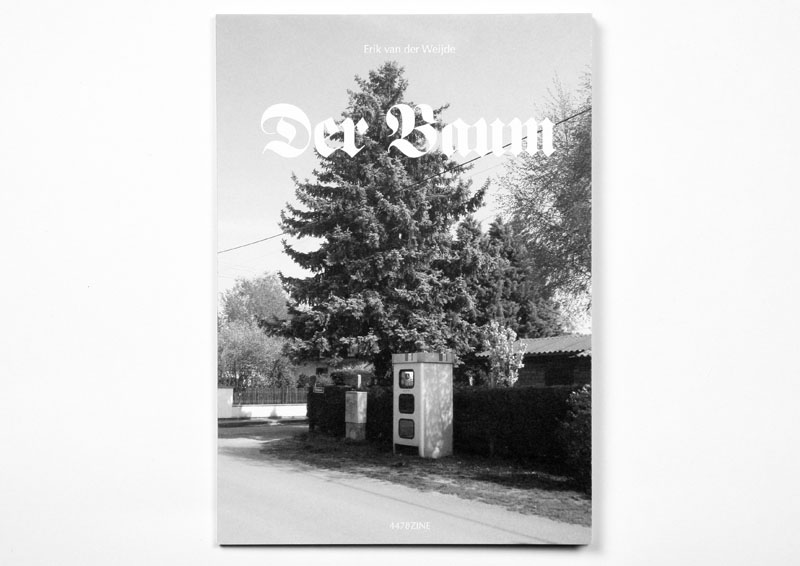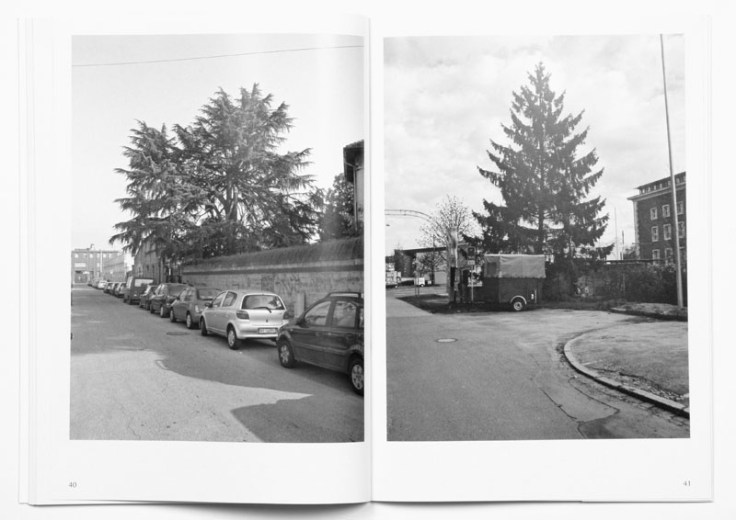Copyright Erik van der Weijde 2010 courtesy 4478ZINE and the artist
In Germany in the 1910’s and into the early 1930’s a series of books were published by Karl Robert Langewiesche by his publishing house Verlag Langewiesche Nachfolger. In the late 1920’s Langewiesche came up with the idea of creating inexpensive books to bring culture and self-improvement to the working class and created a separate publishing group to facilitate his idea, called Verlag Der Eiserne Hammer (The Iron Hammer). On each of these books was the Langewiesche motto Arbeiten und nicht verzweifeln (Work and Not Despair), although also some carried another motto, Das Gute fur Alle (The Good for All). If Erik van der Weijde has successfully incorporated the spirit of these early books into his concept for De Baum (The Tree), then these early German books must be a forerunner of the popular “Dummy” series. Which in this case, De Baum could be the “Decorating with a Tree for Dummies”.
The repetitive design, layout, photographic style and framing of the subject, a tree or a couple of trees, begins to numb your senses by the conclusion of the book. The trees are photographed in a pedestrian documentation style as well as from the advantage point of a pedestrian. Each tree is photographed from a middle distance, providing the viewer with the ability to see their overall structure of each tree, but not close enough to see the details and nuances that might make each tree truly distinct or unique.
The photographs of the trees are presented one per page, two per spread with a uniform white margin. The vertical design of the book complements the vertical nature and framing of his subject. If the tree is wide, van der Weijde just photographs from a distant vantage point. There is one exception that is laid-out in the book perpendicular to the page to maximize the tree’s size, and to provide a photograph of a tree consistent in relative size with the other documented trees.
This concept photobook is an encyclopedic catalog of places where you can decorate an urban space with a tree to show others, as in the spirit of the Der Eiserne Hammer , that you now have self-improved yourself and to make it evident that someone has acquired more “culture”. It does beg the question of how much does this book really vary from the current billion dollar “self-help” publishing culture, where the fore mentioned Dummies books generates millions of dollars in revenue each year? This is at the heart of the subtle caustic humor that I find underlying the photographs and the entire book as an object.
Another subtly is the printing and binding of Der Baum and the Der Eiserne Hammer books, because Langewiesche printed in such large volumes, numbering over 10,000 copies per printing, he could have a very nice book produced at inexpensively prices. Likewise van der Weijde has a nice quality paper with a sewn binding and a dust cover over the stiff covers, befitting a nice photobook. In contrast his black and white photographs and print quality is are not of equal quality to the actual book and remind me of police line-up mug shots; usually photographed in flat lighting, a full tonal range, but the tree shadow’s are blocked and an overall grayness of most images. Thus Der Baum is an aesthetic contradiction, similar in concept of looking down on society as Der Eiserne Hammer.
The late 1920’s and early 1930’s was not a benevolent time in Germany history, with the Nazi party gaining traction and the increasing adoration of Hitler. Thus the tongue in cheek inclusion by van der Weijde of two tree sites that are related to Hitler’s life, which in 1931, might have provided further validation of the appropriateness of where the use of a tree for urban decoration. From what I understand of the social-politics of Nazi regime, there was appropriateness in almost every facet of German life, what was consider acceptable and what was not. At that time, you had an uncertain future if what you did was not considered acceptable, thus the strong social conditioning for almost rigid conformance. And perhaps there might have been a need for a photobook such as Der Baum to help understand what tree was permissible to place where.
Stiff cover with a dust cover, the printed paper is semi-gloss (luster), with a sewn binding.
by Douglas Stockdale





Leave a comment